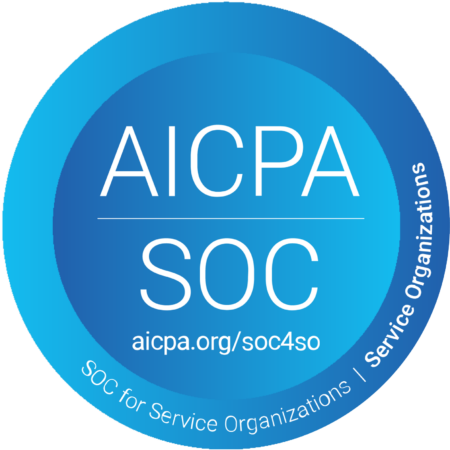Some rivalries have become iconic.
Jerry VS Newman,
Johnny Lawrence VS Daniel LaRusso,
and of course – Sales VS Marketing.

It seems like no matter the era or technology, sales and marketing alignment will continue to be an unattained holy grail of B2B companies, and the blame game between these teams will always play out.
According to LinkedIn, businesses with strong sales and marketing alignment are 67% more effective at closing deals, 58% more effective at retaining customers, and drive 208% more revenue as a result of their marketing efforts.
So, the need is clear. The problem, however, is that throughout the year, both teams are usually super busy with their own KPIs. As a result, you and your team can easily overlook alignment issues.
If you want to ensure real improvement in your sales and marketing alignment, you have to tie it to your annual or quarterly planning.
Let’s go.
1. Set shared goals that work backward from revenue
Managing marketing is a lot like leading a rowing team. You have to make sure everyone is in sync.
This can be achieved by setting a shared goal or destination for both sales and marketing. That’s why alignment around the same revenue goal is a crucial first step.
In our recent interview, Jason Widup, VP of marketing at Metadata, shared how he uses his demand model to ensure sales and marketing alignment is taken care of at the planning stage.
“The planning that we do is around what I call my ‘demand model’. Planning is really working backward from the revenue that we need. So here’s our company goals around Net New ARR that we want to hit by the end of 2022.
The demand model I built is used for marketing and sales. It’s not a marketing demand model; it’s a company demand model. They (sales) know exactly how many outbound meetings they need to create, given our conversion rates.”
Watch Jason’s full interview →
In order to properly share goals, each department should align around the same revenue KPI, then monitor the conversion path toward revenue all the way up the funnel.
You can also set a revenue contribution split between sales and marketing. In addition to motivating the team, this will give you increased clarity regarding the performance and contribution of each department.
2. Set a shared goal of improving the customer journey experience
Besides revenue-related goals, you should also consider setting customer journey experience goals. Improving customer experience is not just the job of customer success.
Unlike quotas, which may cause stress and competition between teams, improving the customer journey experience can be a shared goal that both sales and marketing can collaborate on.
When both teams are focused on making customers happy throughout the buying cycle, they will naturally align and collaborate.
Each team should follow their own way of improving customer experience. Marketing can do it through tools like email automations, while sales can do take a different route, like getting feedback after demo calls.
3. Allocate sales enablement budget
According to G2, organizations with sales enablement budgets achieve a 49% win rate on forecasted deals, compared to 42.5% for those without. Moreover, 76% of organizations with a sales enablement budget see an increase in sales of between 6% and 20%.
The challenge with building these initiatives is that at every point throughout the year, marketing is going to be busy. By securing a budget and creating initiatives for sales enablement, you make sure that marketing will invest the appropriate resources to make sales easier.
Set success criteria for sales enablement
It’s not enough to point marketing’s efforts toward sales enablement. You also have to define specific sales enablement success parameters, such as:
- Speeding up the sales cycle. In an ideal world, if sales knew the exact right messaging to deliver, prospects would glide through the funnel and turn into customers in no time. That’s exactly what your sales enablement efforts should help produce. For more about this, check out our pipeline acceleration article.
- Increasing win rate. Your sales enablement should be measured first and foremost by the SQL to Closed Won conversion rate. If you manage to move the needle on this metric, it means your enablement efforts did what they were intended to do: enable sales, meaning more SQLs converted into customers.
- Use of materials. It doesn’t matter how great the deck you prepared for your salespeople is, if they fail to use it, it’ll be a wasted effort. Frequent use of your marketing materials is one of the best types of feedback you can get as a marketer.
Quick note – Following the previous point, Ruler Analytics discovered that poor sales and marketing alignment was one of the biggest factors that affected the length of the sales cycle.
4. Plan recurring and structured meetings
Many of the companies we recently spoke to about planning, including Yotpo, Lusha, AccessiBe, and Metadata, mentioned they planned regularly scheduled meetings between departments – on either a weekly or bi-weekly basis.
You should have at least two types of meetings:
- Weekly or bi-weekly syncs. These should be shorter meetings to make sure everyone is aligned on the plan and to surface any new insights derived from either department.
- Monthly / quarterly reviews. These should assess the success of marketing and sales in executing the plan. They can also be used as research, where marketing takes on board sales’ feedback regarding past marketing activities in order to know where to double down.
You can read more about the sync meetings in this article.
Schedule quarterly sales and marketing assessments
Qualitative feedback and syncs are key for successful iterative planning.
This is not a difficult task. You just have to plan it in advance. Schedule the relevant dates as part of your planning process and include the structure for these meetings.
For some companies, conversations between teams happen naturally and spontaneously. If that’s not the case in your company, you can help your teams by getting them to meet at pre-scheduled times.
In the interview we mentioned before, Jason from Metadata shared how he makes sure a true back-and-forth conversation happens between his team and sales:
“The main reason why our alignment is so good is because I think like a salesperson. I put myself in the shoes of the sales reps and actually go on and do demos myself. I ask myself: Would I want this kind of lead? And I try to take that to heart as a sales rep and do more of the ones they want. They recognize that, because I will take feedback and I don’t get defensive. If they say my leads suck, I might have a different opinion. I’ll use data and facts to support myself, with no emotion or pride. And we use that to go back and forth. If there are tweaks that someone can point out to me, then great, I’m all for it.”
5. Align your sales funnel and agree on funnel definitions
It’s easy to mess up a good plan when you’re not aligned with the rest of your organization. For example, if sales disagrees with your qualification criteria, you’re doomed before you even spend a dollar on marketing.
Before you jump into execution, sit down with the major sales stakeholders and make sure they’re all on board.
- Does everyone agree on the funnel definitions? What’s considered an MQL, SQL, Opp, etc.?
- Is there a clear handshake between sales and marketing when customers move from one department to another?
- How will you track whether sales and marketing agree about lead quality? Do the teams share a goal?
These questions and others like them can help align sales and marketing, as well as other important stakeholders, around the same funnel and metrics.
6. Build knowledge sharing systems between sales and marketing
Without an active effort to share knowledge and insights, marketing and sales will naturally default into siloed work.
In our interview, Andy Crestodina, CMO of Orbit Media, revealed why sharing knowledge is so vital between sales and marketing:
“Marketers are making content that salespeople think is irrelevant and causes friction. Salespeople get common questions; they don’t close the loop and bring it back to marketers.”
He added this example:
“I was at a kickoff meeting yesterday for an addiction recovery center. When you call them, the person on the other end does a pre-screen, where they check your insurance and answer all of your questions related to location and eligibility. They begin the diagnosis process on that first call. If you look at the website, the call to action simply says ‘Call now’. What a waste! The salesperson has not told the marketer exactly what is happening in sales.
My suggestion for that company was to put all that stuff on its contact form’s thank you page. If the thank you page says ‘Call now to speak to someone immediately, and we’re going to go through this pre-screening process and check your insurance…’, then they’ll make a ton of money from that idea.But nobody had thought of it because the salespeople aren’t talking to the marketers.”
There are many ways to create these knowledge sharing systems:
- Koan – An OKR and Status Tracking Platform that our team at InfiniGrow uses on a weekly basis to get everyone in sync with what other colleagues are doing.
- Slack – Using Slack groups you can mix employees from different departments and get them talking with one another.
- Gong – I personally learned a ton by listening in on Gong calls and hearing actual sales calls.
- Project management tools like Clickup.
- Even Google Docs.
By using these tools, both teams can collaborate and open the lines of communication. Organizing knowledge sharing should be a marketing/sales project on its own, with OKRs, recurring meetings, timelines and deliverables.
7. Put SDRs under marketing

There has been a growing trend to position SDRs (sales development representatives) under marketing instead of their traditional position under sales.
SDRs typically connect sales and marketing. They take care of outbound marketing and lead qualification, as well as transitioning prospects into SQLs (sales-qualified leads) for demo calls.
If the marketing department is measured by SQLs, then it makes sense to regard SDRs as just another SQL generating channel and place it under marketing.
Eyal Katz, founder of the B2B growth agency mvpGrow, raised the same point during our interview:
“If you say that the only thing that makes sense is that marketing is responsible for discovery calls, then SDRs have to be a part of the marketing department. And that’s something that I’m seeing with a lot of my clients. There’s like a shift where the SDR team is moved underneath the VP of marketing.
And that’s something that I think is a really good idea. I think there’s less of an issue in the alignment because what SDRs do is not far from what sales do. If SDRs were under the VP of marketing, that would allow marketing to have a KPI that sales get and that the CEO likes.”
A slightly more extreme explanation was given in another interview by Yan Yanko, head of growth at accessiBe:
“Sales should be under marketing. It shouldn’t be a separate department. An e-commerce shop’s salesperson is its website. Usually, marketing is in charge of the website. Marketing is responsible for optimizing the website, the messaging on the website, and for conversion rate optimization. Marketing is responsible for these things, which are essentially sales tools. Why not make marketing responsible for the physical sales tools—the people? By doing so, you can ensure that the messaging is consistent. Everyone will say the same thing. The same thing is being sold. There is no miscommunication.”
Good news for both teams
Marketing and sales alignment won’t happen automatically. By thinking ahead, you can prevent the common conflicts experienced by many B2B organizations.
Warren Buffet said: “Someone’s sitting in the shade today because someone planted a tree a long time ago.”
If you are a marketing leader who wants to produce better results, you have to make sure you plan for the sales and marketing alignment initiatives at the planning stage. I hope this post gives you some ideas as to how to do that.



